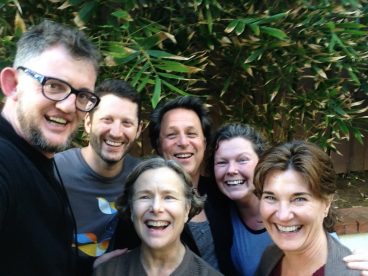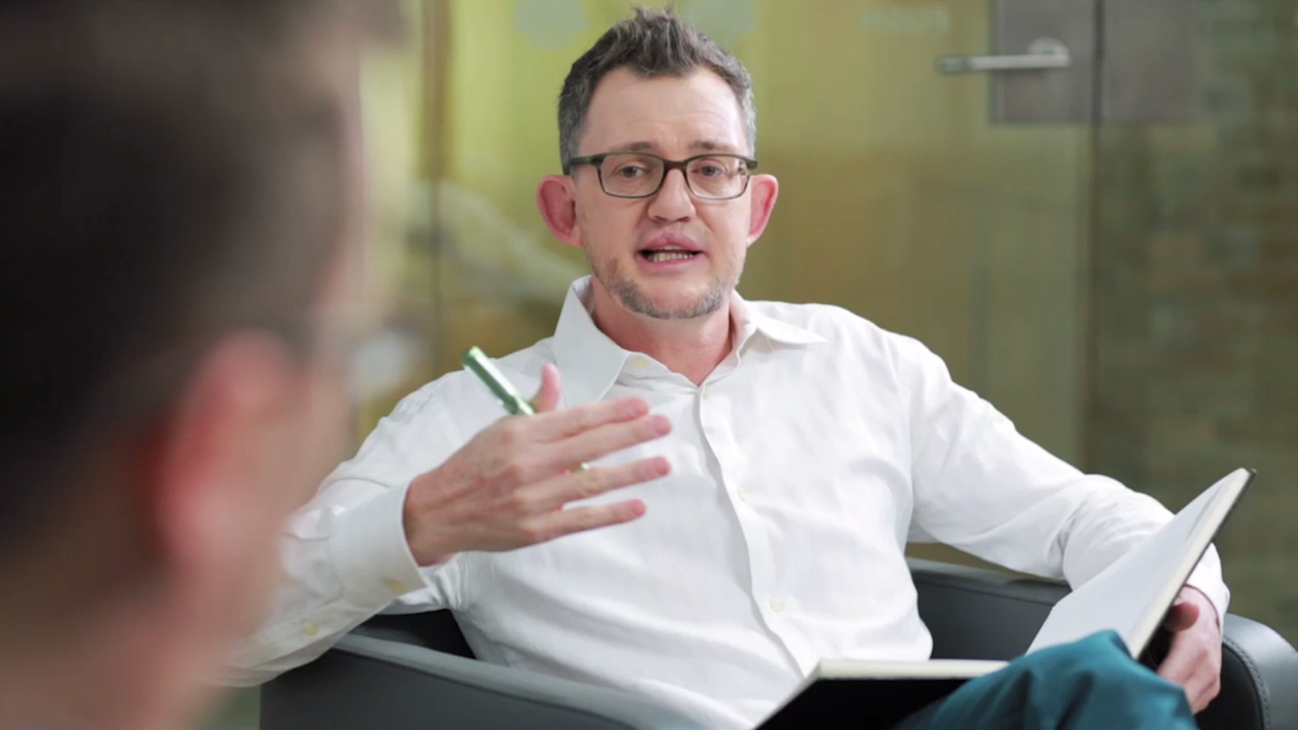Michael Bungay Stanier knows that for organizations to continue to thrive and succeed, the people and teams in those organizations need to do more Great Work: the work that has impact, the work that has meaning, the work that makes a difference. In his blog below, Michael gives three tips on how you can get back on track if you’ve fallen into an April slump:
Managing the April panic
“How on earth,” you say to yourself, “is it already April?” But here we are. Another page turned back on the calendar. Q1 is done and dusted. Winter’s receding fast, and Spring is showing up in its different shades of green. Lurking in the shadows somewhere nearby is your sense of overwhelm. You’re doing your best not to catch its eye – keep moving and maybe it won’t catch up – but part of you is wondering if 2015 has already spiralled out of control, irrecoverable.
That’s certainly how I’m feeling, so it’s not entirely an accident that my mastermind group gathers annually about now. This is the Brain Trust, six people who provide for each other the warmth, rigour, perspective and encouragement that we each hunger for as we run our businesses and show up in our lives.

Over the nine years we’ve been together, our intention has shifted. It started out being about our businesses, and that’s still an important part of the conversation. But these days, more often it’s about how we’re showing up, as leaders and entrepreneurs. Right now I’m flying back from San Diego, feeling focused again and excited about what the rest of the year holds. I’m reflecting on what I’ve learned (or better said, been reminded of again). Perhaps there’s something here to help you get back on track too.
#1 Be Guided by Opportunity Cost Not Sunk Cost
Sunk Cost? How much time and effort and money and goodwill it’s cost you to dig the hole, no matter what your hole might be.
Opportunity Cost? What you’ll miss out on by remaining committed to digging this particular hole.
Sunk cost is what feels real. When we see the blisters on our hands, or the receipt in our wallet, we’re reminded of just how much effort it has taken to get here. Having invested this much, surely we should keep going on? To stop now would waste all that [insert resource of your choice, from the list above]. But that resource is spent, regardless. And if it’s the wrong hole, you need to stop digging.
Of course, it takes courage and focus to draw that line. Two of the best things I’ve ever created – Presentation Genius and The Great Work MBA – are no longer things we offer at Box of Crayons. They’re the wrong holes for us. Beautiful, cool and stylish holes. But the wrong holes.
What’s helped the Box of Crayons team make those tough decisions was looking at the Opportunity Cost for keeping them on. We’re focusing on our programs that help busy managers coach in ten minutes or less. And having those other programs gnawed away at our focus, drained our energy a little, made our outline fuzzier than we wanted it to be.
It comes back to one of my favourite questions: What are you truly saying Yes to? And if you’re saying that, what must you say No to? Roger Martin would likely put it another way by asking this one of his five strategic questions, “What’s your winning aspiration?”
So come back to what matters. You can’t do everything, nor do you want to.
To get back on track, what’s the thing you’re fully committed to?
And what holes now do you need to stop digging?
#2 Be Ready to Adapt
I saw a presentation recently by a McKinsey bigwig about their new leadership model. McKinsey is the preeminent strategy firm in the world, a place filled with very brilliant minds who’ve built a reputation for creating rigorous – albeit not always doable – strategies for their corporate clients.
With the rise of a VUCA world – Volatile, Uncertain, Chaotic, Ambiguous – the solution, the McKinsey man opined, was AGILE leadership. I can’t quite remember what his AGILE acronym stood for because it wasn’t that useful, but I was struck by an off-hand comment about the implications for strategic planning. “We don’t really do strategic plans anymore,” he said (although I’m paraphrasing here).”We meet every three months, test out a range of different scenarios and imagine our best responses to them … and then make our best guess on the direction for the next 90 days.”
So in short: the “strategy firm” doesn’t really do strategy any more…
I’m sure it’s not quite that simple, but what’s liberating here is the understanding that of course your plan has become redundant. That’s what plans do. Mike Tyson mentioned that “Everyone has a plan ’til they get punched in the mouth.”
What matters is that you stop and think, not just keep on doing. Pull your team into a room. Put away all gadgets. Avoid leaping to tactics. Ask some questions.
- What do you we know to be true?
- What’s working? What isn’t?
- What’s different from 90 days ago? What’s the same?
- What are we assuming? Where does that make us vulnerable?
- What should we stop doing? Start doing? Do more of?
In fact, it comes back around to what Eisenhower said more than 70 years ago: “Plans are useless, but planning is indispensable.” To get back on track, build in the time to reflect and think.
#3 Connect with Those Who Matter
It’s been a luxurious week for me, and not just because I got to leave the perpetual winter of Toronto. I had three intense and lovely days with the Brain Trust, working through my issues and helping them work through theirs. Before that, I was at a conference for leaders of training companies in the desert heat of Phoenix. As well as listening to such luminaries as Peter Senge and Josh Bersin, I hung out with smart colleagues like Les McKeown, Pam Slim and a whole host of people who were wresting with the same business issues that keep running round my head.
I also saw a friend – I’m protecting their identity here – who’s in the midst of writing a book. When I caught up with them in San Diego, they were reaping the benefits of having worked rigorously through the first two points. They know exactly why they’re writing the book and the plan to get the book out into the world has adapted and stayed flexible as circumstances have changed. The book happens to be about the quest to recover human connection, and (sneak peek!) here’s how one of the chapters ends:
I had no interest in being incredibly uncomfortable or getting dirty or sleeping on benches in foreign airports – or domestic ones. I couldn’t and didn’t want to take on some extreme physical challenge or even a small one for that matter. I wasn’t looking to conquer anything. I wanted to connect. I was after a different kind of life adventure. The search for connection – it and its meaning. Love, connection, meaning. Now.
To get back on track, reconnect with those who hold you with love and generosity in their hearts. Be brave enough to be real, vulnerable and messy with them. If and when they offer you advice, be open to the wisdom that’s there, without feeling you need to do what they’re suggesting.
The Actor’s Creed
My friend Mark Bowden of Truth Plane – and co-creator of Presentation Genius as it happens – has a philosophy from his days of training actors. When an actor is trying to do too much, things get blurry, confusing, inconsistent. The performance loses its power. Mark’s guidance is simple: Make a Choice, Go Big, Keep it Clean.
Make a Choice: Say Yes. Say No.
Go Big: Be bold, be courageous. Don’t do the timid version. Double down.
Keep it Clean: stop adding things. Strip it back to what’s essential, and focus there.
If you want to get back on track for 2015, give yourself the space to rethink and refocus, the generosity and grace to know you’ve done your best up to this point, and spend time with the people who matter. That’s what will pull you back to what matters, to your Great Work.

